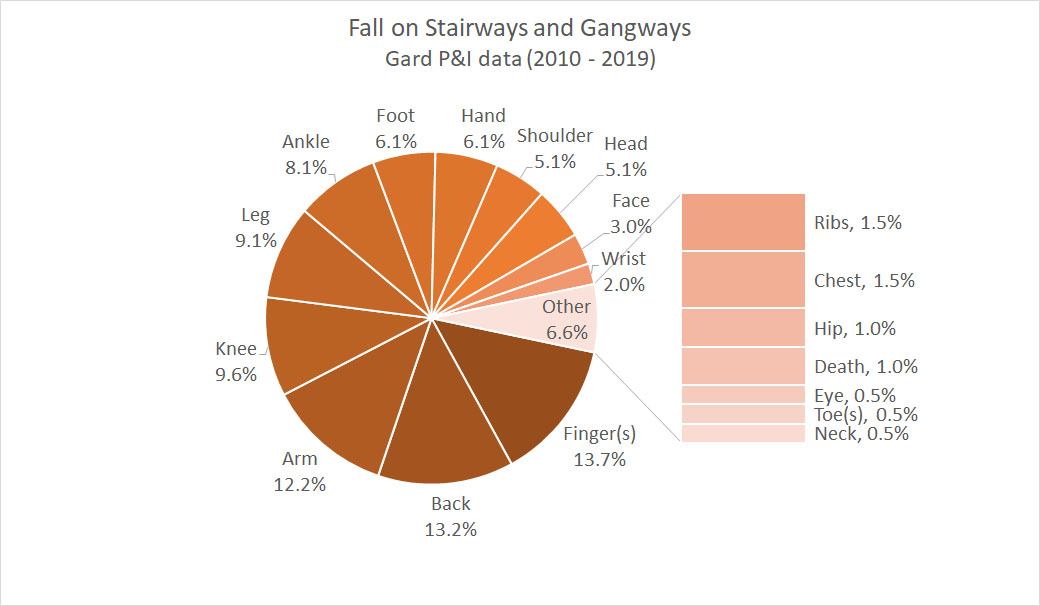When walking up or down stairs onboard, apply the old adage of ‘one hand for yourself and one for the ship’ and keep one hand free to grasp the handrail.

Steady on the stairs!
Published 16 March 2020
Walking up or down stairs is different from walking on level ground. Each step, instead of initiating on the heel, initiates on the toes and the ball of the foot and extra effort is required to transfer the weight vertically, up or down. According to the UK Health and Safety Executive (HSE UK), the highest chance of a person falling in a staircase is during the swing phase of the trailing leg and the injuries sustained by a person when descending stairs (walking down) are more serious compared to a fall occurring when walking up a set of stairs. The injuries can range from bruises, sprains, bone fractures to death in more serious cases. Our P&I claims data for the last 10 years shows that fingers, backs, arms, knees and legs are the most common body parts injured as a result of falls in stairways and on gangways.
What are the underlying reasons for slips and falls on stairs?
The stairways on ships are usually at a steeper angle than stairs ashore and the ship’s motion in the sea creates additional challenges. Very often we see that crew ascend and descend the stairs without holding the handrails, usually because both their hands are occupied in carrying tools or other objects. There may be other contributory causes as well, such as stairs may be slippery, proper footwear was not worn, anti skid tape not applied or the crew member is in a hurry. Not holding a handrail greatly increases the risk of the person sustaining an injury from the fall.

Graph showing injury statistics
What can be done to reduce the risk of injuries from falls on stairs?
To start with, crew can be trained to always keep one hand free to grasp the handrail (Code of Safe Working Practices (COSWP)) if needed. Instead of carrying tools etc. in the hand, where possible tools should either be carried in a belt or some other way be found to move them. They can use the trailing hand technique when descending. Trail the strongest of the two hands underneath the handrail behind yourself and turning the body slightly towards this hand when walking down. Should the person fall, the trailing handgrip can prevent a serious injury. In addition, stairways, handrails and landing surfaces onboard should be properly maintained and kept clean and free from substances liable to cause a person to slip or fall.
During the safety rounds, crew should check that the stairs:
have slip resistant properties, especially at the leading edge
the edges and the landing areas are clearly marked
are free from obstacles or other hazards
are well lit.
Gard Loss Prevention poster: Steady on the stairs


